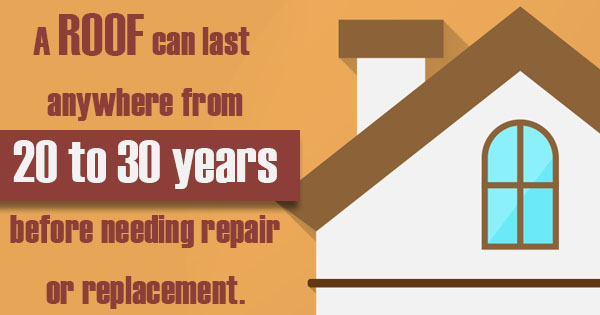 Sooner or later, every homeowner has to deal with some regular maintenance. As your home grows older there are certain fixes and tweaks it’s going to need in order to not only be safe and secure, but also to remain a stable investment. Here are three common issues you will encounter during your time as a homeowner, and what you should know about them.
Sooner or later, every homeowner has to deal with some regular maintenance. As your home grows older there are certain fixes and tweaks it’s going to need in order to not only be safe and secure, but also to remain a stable investment. Here are three common issues you will encounter during your time as a homeowner, and what you should know about them.
Replacing Your Roof
A roof can last anywhere from 20 to 30 years before needing repair or replacement, depending on the materials used and the weather conditions. Continual hail, snow, or hurricanes can push this date up. If you’re replacing your roof, asphalt shingles are now one of the most popular options because they can be reinforced with fiberglass or organic felts, and are fairly fire resistant. Slate is popular in the Northeast because it’s fairly indestructible, though expensive. Proper roof ventilation is key to preventing rot, condensation, buckling shingles, and more.
Sewer Replacement With Trenchless Pipe Bursting
Your plumbing can last for many years; typical copper piping might average around five or six decades, while brass can last up to 100 years. Freezing, tree roots, and other issues can cause problems before this lifetime is reached, though. When it’s time to pull up an old sewer line, you’ll want to consider the benefits of trenchless sewer methods, which have been around for the past 15 years. This is when no excavation is necessary; only a small hole is needed to access the pipe. The old pipe is burst from the inside and a new pipe is inserted. Many homeowners (73%) report preferring trenchless pipe repair since it can help preserve outdoor landscaping that would otherwise be ruined by excavation (with up to 90% less damage).
Replacing Your AC
Getting stuck without air conditioning on a hot summer day is never fun. Although it can be a pain to replace your AC, if your house came with an older model then you may actually experience significant energy cost savings with a newer, more efficient unit. It’s important to keep in mind that an experienced contractor should not choose the size of your replacement AC based simply on the square feet of your house. Everything from the R-value of your windows’ insulation to the typical humidity levels should be taken into account.
Whether you need to deal with a broken AC, pipe bursting, or roof replacements, being an informed homeowner is the best approach.


